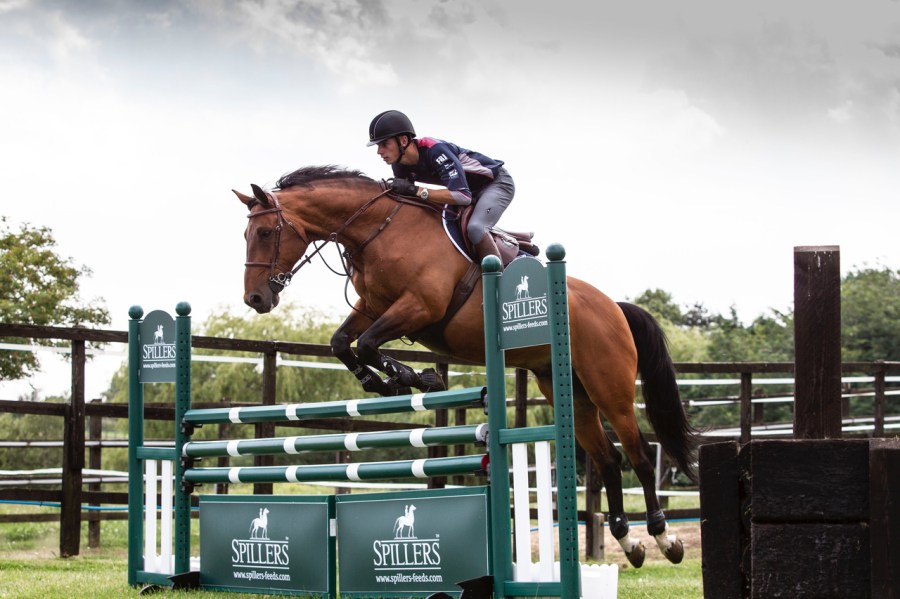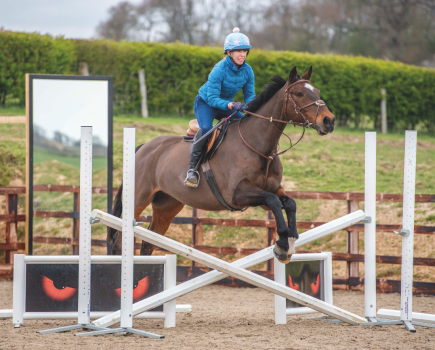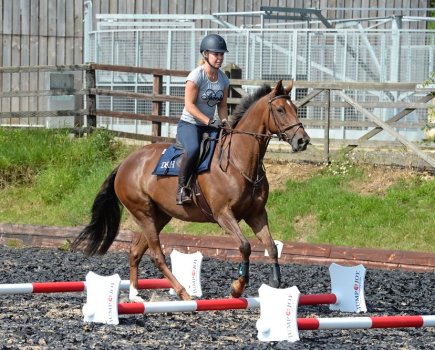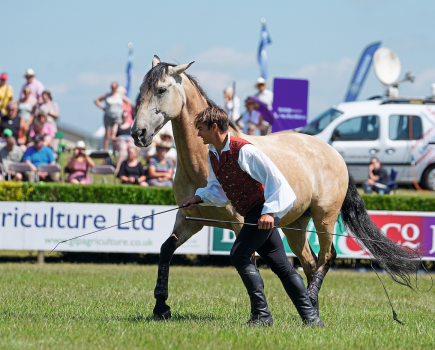Want to keep your horse straight between fences? Showjumper Joe Stockdale shares two exercises to control your horse’s shoulders and stop them drifting sideways.
When jumping a course of fences, it’s important that you have control over your horse and that they’re listening to you. Some horses anticipate fences – cutting corners or going too wide – so it’s about controlling your horse’s shoulder and preventing them from drifting in or out.
If your horse drifts, it affects both their balance and the line to the fence, changing your stride pattern and your approach to the jump. If they drift in, it means you have less space and may have to put in shorter strides to make the fence. Alternatively, if they drift out, you’ll have too much space and will need bigger strides to make it to the fence. Either way, when your horse is unbalanced, you’re more likely to have the fence down.
Before you begin, warm up your horse on the flat in walk, trot and canter.
Exercise 1
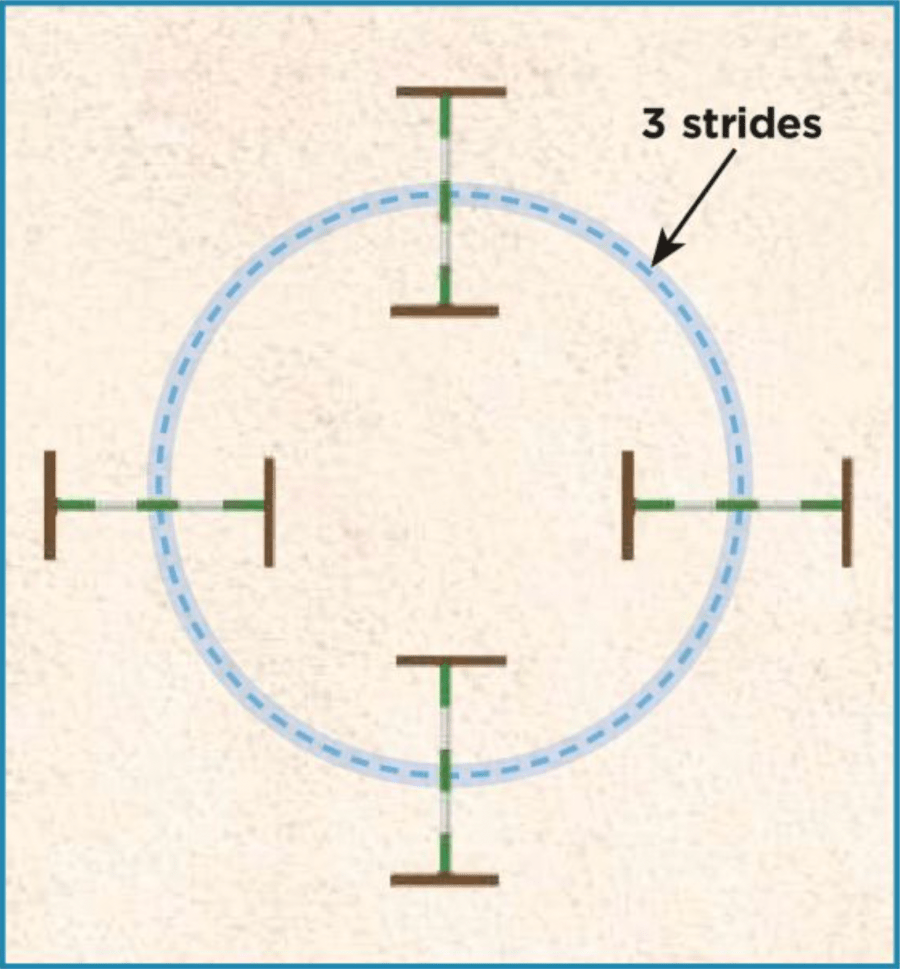
Exercise 1
Time: 15 minutes
This first exercise is designed to help guide control of your horse’s shoulders and stride length by jumping cavaletti on a 20m circle.
Set it up: Set up the cavaletti so there’s jump at each point of the circle (12 o’clock, 3 o’clock, 6 o’clock and 9 o’clock), with around three strides between each (measured from the middle of each pole).
How to ride it:
- In canter, start by jumping only two of the cavaletti to introduce your horse to the exercise – so just jump alternate fences (12 o’clock and 6 o’clock).
- Aim for the middle of each fence and stay in a balanced, steady canter, remaining on the right line. This requires you to keep good control of your horse’s shoulders in order to maintain the correct line to the next cavaletti – it’s great practise for jumping a course.
- Once your horse is jumping the two cavaletti comfortably, add in a third fence, and then all four. To make the circle ride smoothly and effortlessly, you must maintain control of your horse’s shoulder using your outside leg (when they drift out) and inside leg (when they drift in).
- Don’t pull your horse around the circle with your reins as this will encourage them to fall out through their shoulder. Make sure that they’re on the correct bend and canter lead, flexing to the inside of the circle, that they’re listening to you and that they’re well balanced. They must hold themselves and not drift to the outside (which will make the distance between the fences greater), or fall in (making the distances shorter).
The next step: To make this exercise a little harder, you can play with the number of strides between each fence. Ask your horse to collect, making the circle smaller and taking a stride out, and then lengthen the canter by moving to the outside line of the circle and adding in an extra stride.
Exercise 2
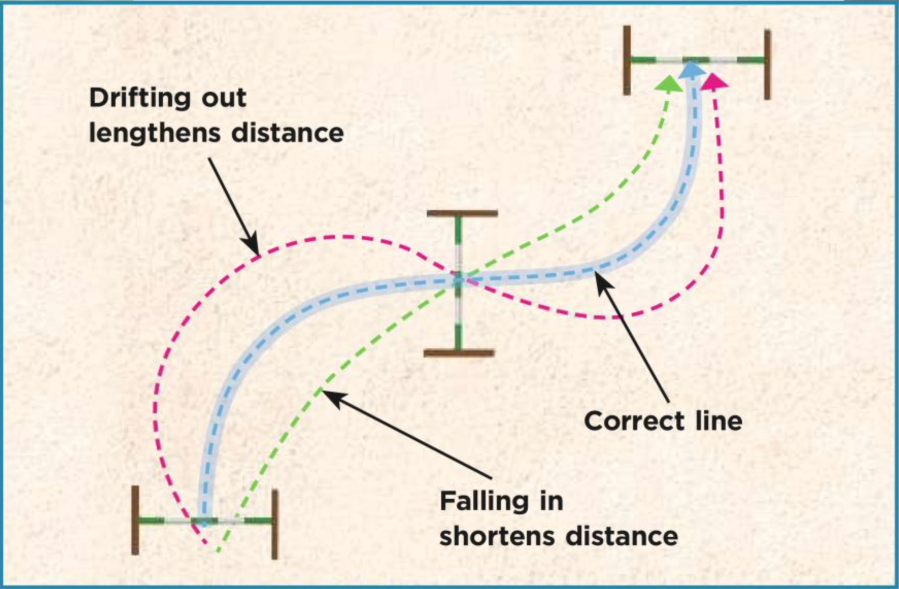
Exercise 2
Time: 15 minutes
This ‘S-line’ exercise involves jumping three small fences in an ‘S’ shape, incorporating two dog legs. Using the same skills practised in exercise one, you need to ride the correct line through the combination. Ensure that you get the first fence right, otherwise the second and third parts will be affected.
Set it up: Set up three fences on an ‘S’ line, as shown in the diagram for exercise 2.
How to ride it:
- Start by jumping the first fence on a straight line – ensure that the last two or three strides are straight into the middle of the fence and that your horse is balanced. As soon as you land, look up to the next fence and make the turn to the middle element using your legs to keep your horse on the right line. On landing, look up to the third element. The key to jumping dog legs is to stay centre to centre of each fence and break the turn down into two straight lines – so, for example, three strides in a straight line away from the first fence, then a turn, and then three straight strides to the next.
- It’s important to turn your horse from your leg, not your hand. It’s also vital that they’re listening to you – you are changing direction after each fence, so they must be in tune with your seat. They need to stay in balance, correctly change their leading leg each time and stay locked on to the next fence. As the rider, remain balanced and still so that your horse doesn’t anticipate the next fence and change the line.
- The dotted lines show where you can increase or decrease the line depending on whether your horse falls in or out through their shoulder. This exercise is great for getting to know which line or stride/ distance your horse prefers. Hopefully they will stay balanced and land on the correct lead; if they don’t, get them to change as soon as possible so that they’re balanced for the next fence.
Meet the expert: Joe Stockdale, son of the late, great showjumper Tim Stockdale, was selected to represent Britain at the Junior Nations Cup in 2017, at the Young Rider Nations Cup and at the 2019 Europeans. Joe made his senior championship debut in 2021 and he was part of the bronze-medal British team at the World Championships in 2022.
Lead image: Joe Stockdale. Credit: Team Stockdale
Check out our subscription offer

